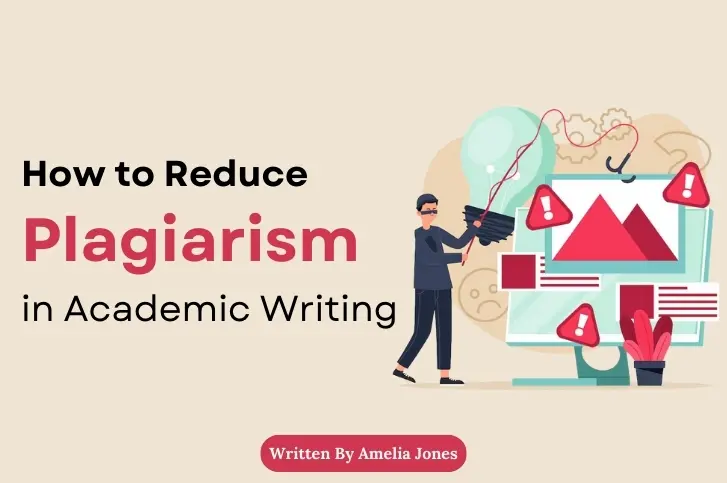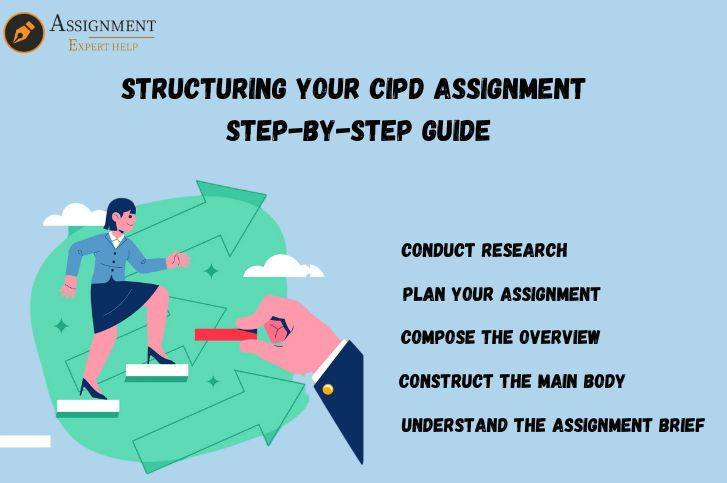How to Reduce Plagiarism in Academic Writing: Best Practices
- Amelia Jones
- Apr 10
- 6 min read

Plagiarism is the biggest issue that students struggle with in their academic writing. It's a serious issue that can ruin your entire research and fudge the knowledge and integrity of your entire work. It ruins your image and the value of education. In today’s world, when the whole education system is connected and based on research, integrity and originality in your work are essential. Having no plagiarism in work can be a challenging task, but you can easily reduce it with a few practices.
In this blog, we will discover the best strategies to reduce plagiarism in academic writing and will explore the ways that students and researchers can adapt their future work to maintain credibility. You can use a few online plagiarism checker tools as well to ensure that your final document is free of plagiarism. Let’s start with a definition, and then we’ll discuss the ways to reduce plagiarism.
What is Plagiarism?
Plagiarism happens when you use someone else’s work, ideas, thoughts or expressions without giving any proper credit to the original author. Plagiarism involves using someone’s text or copying and pasting it or paraphrasing it. Even presenting someone else’s ideas as your own without any citations. It is a serious issue and can lead to severe consequences such as mark deduction and suspension, and it can also ruin your image and get you in legal trouble.
The Importance of Reducing Plagiarism
The purpose of academic research and writing is to contribute to a specific field of study. Fill the gaps in the existing body of knowledge and present a new, fresh perspective and ideas. Right? So if your work is plagiarised, the whole foundation of your work is jeopardised. That is why reducing plagiarism is important, and that ensures:
Integrity: Maintaining the realism and credibility of academic work.
Trust: Developing trust between students and researchers.
Knowledge dissemination: Promoting the appropriate use and exchange of intellectual property.
Fairness: Ensuring that those who make contributions to academic subjects receive due credit for their efforts.
Best Practices to Reduce Plagiarism in Academic Writing
Raise plagiarism awareness and understanding.
Students often engage in plagiarism because of a lack of awareness of the consequences. To fight it, universities must take a few actions:
They must make students aware of the concept of plagiarism when they start their academic journey.
Explain the importance of citations and how to use them correctly.
Conduct some workshops to teach them to learn about academic integrity and proper research methods.
The best way to avoid plagiarism issues is to understand the importance of originality and correct citations. The more you understand, the less you will engage in it.
Provide instructions on appropriate quotation and paraphrasing methods.
These two are essential skills that can be very helpful in your academic writing. In the paraphrasing technique, you restate someone else’s idea in your own words, whereas quoting allows you to use their idea in the exact words but with proper credit.
How to use paraphrasing correctly:
Read the entire text and understand what it says.
As you understand what it says now, keep the OG text in mind and write what you interpreted in your own words.
Make sure your interpretation is different in structure and vocabulary from the original text.
When to use quotation marks:
When the source’s exact phrasing is critical, like for a critical phrase or when the language is unique, use quotation marks.
Use the correct citation style and provide proper credit.
When students know the proper use of these two techniques, they will be able to reduce unintentional plagiarism.
Use plagiarism checker tools.
The simplest and most effective way to identify and reduce plagiarism is to use an online plagiarism check tool. These tools can easily detect if there is any similarity in our text. Tools like Turnitin and Grammarly can help you compare your text against several sources to ensure that your document is original or not.
How to properly use plagiarism checkers
Pre-submission checks: Before the final submission, students must check their text by using a plagiarism detection tool and ensure that it is free of plagiarism.
Examine flagged text: Sometimes, the plagiarism detection tool highlights any sentences in your text, and then you must change those sentences and reword them correctly and cite sources.
These tools help detect plagiarism and correct similarity, but they are an essential part of your writing process because they ensure the integrity of your text.
Encourage referencing and citations.
Citation is the ideal way and an essential aspect to give proper credit to the original authors. By citing sources accurately, you can show respect for the ideas and theories and the person who came up with those ideas and contribute to the field of study and scholarly discussion.
Use citation generators: Several referencing tools are available for formatting your references and citations. Such as Zotero, EndNote, etc.
Emphasise the value of the source evaluation: It is important to teach students how to assess the reliability of their sources so that they cite them correctly and provide proper credit.
You must cite your sources as you write. It will help you meet all the academic standards and avoid plagiarism issues. Avoid leaving this step until the end of the paper.
Execute clear academic integrity policies.
Every university should make some clear and comprehensive policies about the whole plagiarism issue to ensure academic integrity. That must include what constitutes plagiarism, what the consequences are and how to prevent or reduce it. Institutions must communicate these policies to students regularly to make them aware. They can use the university website, conduct seminars or sessions, or even add this concept to the course syllabus.
Key elements of effective policy
Plagiarism detection process: outline how plagiarism will be caught or detected (using plagiarism detection tools)
Plagiarism penalties: Clearly state the academic and professional repercussions for plagiarism offenders, which can start from warnings and end with expulsion.
Systems for support: To assist students in developing their writing abilities, offer them resources such as writing spots, online manuals, and peer mentoring.
By establishing a strong culture and policy for academic integrity, every institution can help students reduce plagiarism issues in their academic writing and encourage an environment of honesty and respect for original authors.
Foster originality in assignments and assessments
One more strong way to reduce the plagiarism issue and fight it in academic writing is that if students get an assignment that requires them to think critically and write their own thoughts and assessment, then it will help them reduce plagiarism issues. That can be in many ways, like:
Customised Themes: Assign a theme to students to write that requires them to do their own original research and reflect on their own experience and thoughts.
Open-ended enquiries: instead of just summarising the previous study, ask them questions and encourage students to think critically. Evaluate the information and come up with their own answers and solutions.
Collaborative learning: To generate fresh concepts and perspectives and boost responsibility, promote class discussions, peer reviews, group projects, etc.
When students are required to show their creativity and demonstrate how much they understand the concept they are working on, it helps to reduce plagiarism.
Apply a peer review approach.
This approach can be proven a powerful tool for students to reduce plagiarism issues in their academic writing. When students review each other’s work, they can honestly catch plagiarism or any similarity issues and also offer formative feedback to improve their writing.
Advantages of the peer review approach
Improved writing style: peer review can provide you with feedback or maybe criticism that can help you make your formatting and writing better; you can improve the organisation and write more clearly.
Enhanced accountability: When you know that your work is going to be reviewed by others, you are less likely to make mistakes and give your best on your end. You make sure that your work is completely unique and thorough.
The peer review approach helps you form a community that can work in a group to review each other’s work and help them to improve their work and enhance the integrity.
Offer feedback and assistance on writing skills.
Plagiarism issues not only occur when you just copy and paste someone else’s ideas, but they can also happen when you lack an understanding of writing and academic conventions or sometimes when you just lack writing skills. Offering feedback by teachers and professionals can help students improve their ability to write and communicate their thoughts in a better manner and cite their sources properly.
Ways to support students
Writing workshops: Conduct classes or workshops to teach students how to conduct research and write, and organise the information and cite sources correctly.
Teachers as mentors: Have a one-on-one session with each student to discuss their work to help them understand the academic etiquette and write in a better way.
By offering help and necessary tools to students for their effective academic writing, institutes and teachers can help them reduce plagiarism issues.
Wrapping It UP
Plagiarism is a serious problem when it comes to academic writing, but with the right approach, strong policies, and use of modern technology and tools, it can be easier for you to reduce this issue and prevent it from happening. By understanding the importance of correct citation and referencing and research practices and even paraphrasing techniques, you can increase the integrity and originality of your work. Your institution and academic professionals can help you achieve that with their assistance and by continuing to build an academic environment that values academic integrity. You can also get some academic help for writing your papers and ensure the originality under their supervision.



Plagiarism is a serious concern in academic writing—not just for integrity, but for the quality of learning itself. To reduce it, always cite reliable sources, paraphrase thoughtfully, use plagiarism-detection tools, and keep your ideas original. If you're looking for structured guidance on writing with clarity and authenticity, expert services like academic writing service can help you develop your ideas uniquely and confidently while staying on track with scholarly standards. A strong foundation in ethical writing not only prevents plagiarism but also enhances your academic voice.